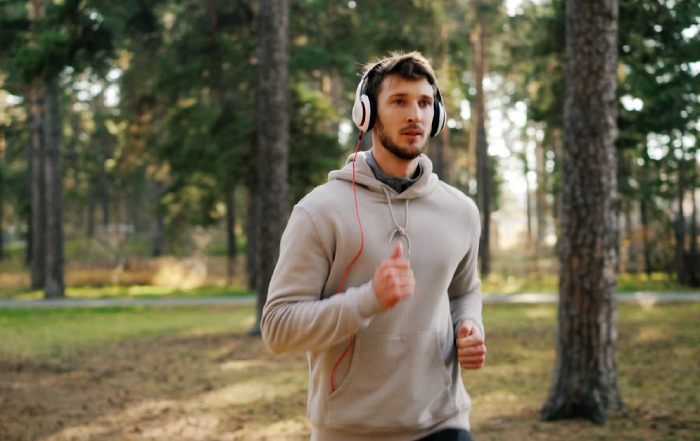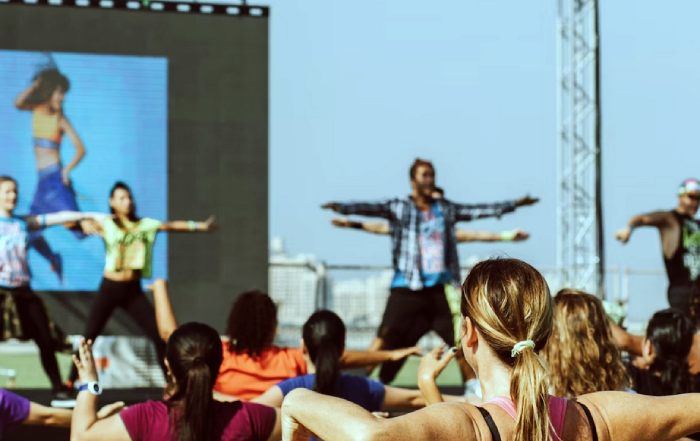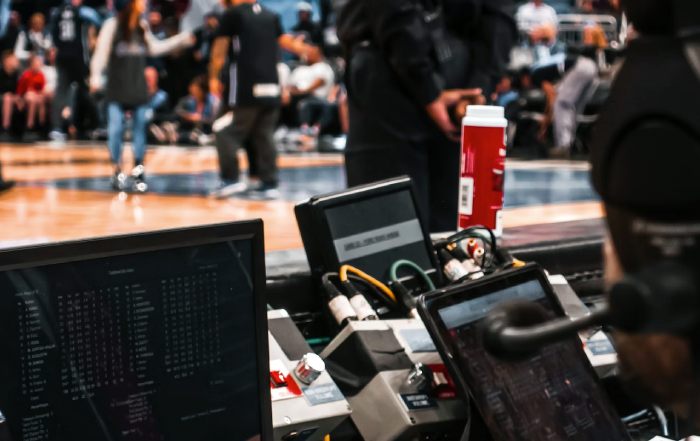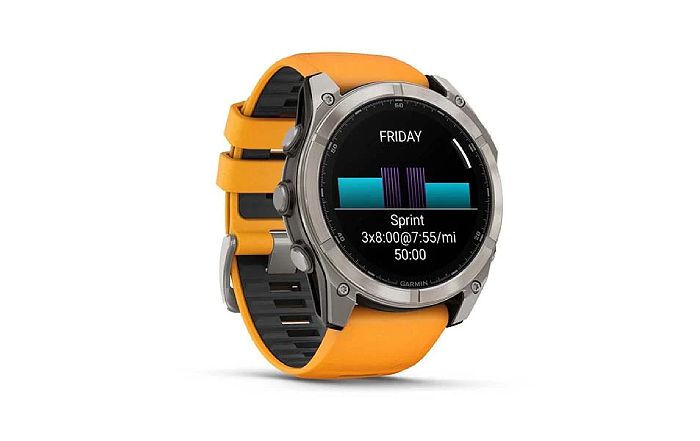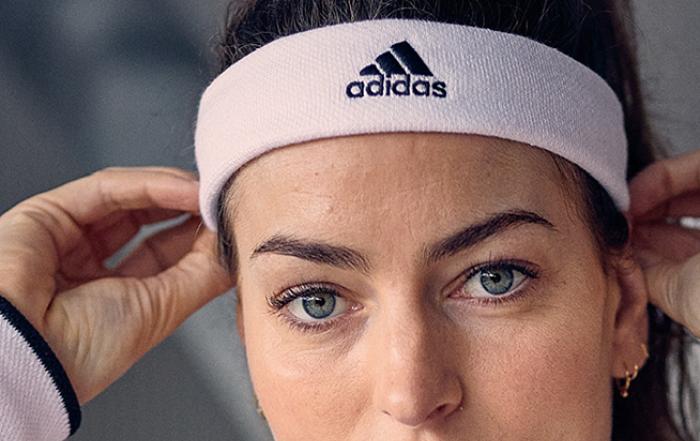The global rise of wearable fitness technology has redefined how individuals engage with health, exercise, and performance. Australia and Europe stand at the forefront of this evolution, combining innovation, data-driven insights, and lifestyle integration to create one of the most dynamic markets for connected health. With the convergence of artificial intelligence, precision sensors, and health-conscious culture, wearable devices are no longer accessories—they are essential components of modern wellness ecosystems. On SportyFusion.com, this movement reflects the platform’s commitment to chronicling how technology, culture, and athletic performance merge to inspire a healthier and more connected world.
Evolution of Wearable Fitness Devices
Wearable fitness technology has evolved from basic pedometers to complex biometric systems capable of tracking oxygen saturation, sleep patterns, body composition, and emotional states. Companies like Apple, Garmin, Fitbit, Samsung, and Whoop have accelerated this transition, integrating data science with human physiology. In Europe, the focus has shifted toward health prevention and lifestyle sustainability, aligning with the region’s robust healthcare systems. Meanwhile, Australia’s market is driven by outdoor fitness culture and environmental adaptability, making wearables essential tools for sports performance in diverse climates.
The introduction of Apple Watch Ultra 2 and Garmin Fenix 8 exemplifies the fusion of engineering precision with lifestyle appeal. These devices now offer integration with AI-driven coaching platforms and cloud-based analytics that help users interpret physiological data. In regions like Germany, Sweden, and Finland, athletes and professionals have embraced this technology as part of a holistic approach to wellness, emphasizing recovery and mental balance alongside physical metrics.
To explore how fitness culture has evolved in parallel with these innovations, readers can visit Fitness Insights on SportyFusion for deeper context.
The Australian Market: Lifestyle Meets Technology
Australia’s wearable fitness technology market reflects the country’s deep connection to sports and outdoor living. The nation’s emphasis on beach culture, endurance training, and community sports has made fitness wearables an essential part of daily routines. Companies such as Athos, Lumen, and Myzone have found strong adoption among Australian gyms and training studios that integrate live feedback into personal training sessions. The integration of AI-based health tracking systems into sports academies and wellness resorts is creating a new generation of data-aware athletes.
In cities like Sydney, Melbourne, and Brisbane, startups are developing custom algorithms that combine wearable data with environmental inputs such as UV exposure and air quality to adjust training intensity and hydration reminders. This adaptability reflects the local climate diversity and the growing need for sustainable athletic health management. Learn more about sports performance and innovation shaping modern fitness practices.
Australia’s universities and research institutions, including University of Sydney and RMIT, are collaborating with private sector innovators to advance wearable analytics for sports medicine and rehabilitation. The government’s interest in digital health infrastructure—highlighted in initiatives by Australian Digital Health Agency (ADHA)—is accelerating wearable integration into clinical and preventive care systems.
For those interested in the social implications of this growing ecosystem, SportyFusion’s Health Section provides context on how technology is reshaping personal wellbeing across communities.
Europe’s Multi-Dimensional Wearable Landscape
Europe’s wearable technology market, valued at billions of euros by 2025, is driven by a confluence of innovation, health regulation, and cultural diversity. From the design studios of Stockholm to the research labs of Zurich, European companies emphasize precision, design aesthetics, and sustainability. The European Union’s Digital Health Strategy has standardized data protection and interoperability, ensuring that wearable devices contribute to both public health and personal performance.
Brands like Withings, Polar, and Suunto are European pioneers that emphasize longevity and precision engineering. The Withings ScanWatch 2, for example, includes a clinically validated ECG monitor and sleep apnea detection system, symbolizing Europe’s commitment to medical-grade consumer technology. Polar, founded in Finland, continues to lead in heart rate monitoring accuracy—a benchmark for performance athletes worldwide.
Cultural acceptance of wearables varies across Europe. In Scandinavia, where outdoor recreation is integral to lifestyle, devices with advanced GPS and environmental sensors are particularly popular. Meanwhile, in Southern Europe, wearable adoption aligns more with lifestyle and fashion integration, driven by collaborations between brands like Montblanc and TAG Heuer with luxury watchmakers.
The interplay between sustainability and technology is also crucial. Many European companies are introducing recyclable components and carbon-neutral production methods. To explore broader discussions on sustainability in sports technology, readers can visit SportyFusion Environment.
Data-Driven Fitness and AI Integration
The defining trend of 2025 in wearable fitness technology is the integration of artificial intelligence and cloud computing. AI algorithms now interpret complex physiological data such as heart rate variability, glucose trends, and cortisol levels to predict fatigue, optimize training, and detect early signs of illness. This shift from passive data collection to active, personalized coaching has changed how individuals engage with their health.
Platforms like Google Fit, Apple Health, and Strava have evolved into interconnected ecosystems that synchronize across multiple devices. In Europe, health-conscious consumers demand privacy-focused platforms that comply with GDPR, leading to innovations in decentralized fitness data management. In Australia, where outdoor training is prevalent, real-time AI assistants like Whoop Coach and Oura Ring Gen 3 offer insights into heat exposure and circadian alignment.
AI-based platforms now extend beyond physical metrics to mental well-being, integrating mindfulness data and emotional analytics into training feedback loops. Learn more about how AI is transforming human performance in SportyFusion Technology.
The Role of Wearables in Preventive Healthcare
One of the most profound impacts of wearable fitness technology is its role in preventive healthcare. Both Australia and Europe are leveraging wearable data for early intervention and chronic disease prevention. Continuous monitoring of blood pressure, cardiac rhythm, and respiratory rate provides clinicians with real-time access to patient information, reducing hospitalization risks and improving life expectancy.
In Germany, partnerships between Siemens Healthineers and health insurers have enabled data-driven wellness programs that reward individuals for maintaining activity levels. In Australia, health insurers like Bupa and Medibank are incorporating wearable-based incentives into wellness plans, encouraging healthy lifestyles while reducing healthcare costs. These initiatives mark a paradigm shift toward proactive health management, where technology and policy intersect to create lasting behavioral change.
For an in-depth look at how the global fitness ecosystem connects healthcare and technology, explore SportyFusion World.
Market Expansion and Consumer Trends
The wearable fitness technology market in 2025 has reached a phase of rapid diversification. The European market is projected to exceed €30 billion by 2026, while Australia continues to grow at double-digit annual rates. Factors driving this growth include affordability of entry-level devices, brand partnerships with sports leagues, and the rise of eco-conscious consumers demanding ethically sourced materials.
Consumer behavior in Europe emphasizes data privacy, aesthetic quality, and integration with smart home ecosystems. Conversely, Australian users prioritize durability, solar charging, and outdoor usability. The Garmin Instinct Solar and Coros Apex 2 Pro exemplify this preference for rugged reliability. Meanwhile, fashion brands like Adidas and Nike are embedding biometric sensors into performance apparel, turning garments into real-time analytics systems.
The convergence of sportswear and technology reflects the new era of “smart performance fashion,” blurring boundaries between aesthetics and data intelligence. To read more about these brand-led innovations, visit SportyFusion Brands.
Integration with Sports Performance and Coaching
Elite sports organizations in both regions have adopted wearable systems for data-informed coaching. European football clubs such as FC Barcelona and Bayern Munich use GPS-tracking vests and biometric patches to monitor player performance during training and matches. Similarly, Cricket Australia integrates wearables to analyze player fatigue and optimize recovery.
These systems capture metrics like acceleration, impact load, and recovery time, allowing coaches to tailor individualized training plans. Catapult Sports, an Australian company, has become a global leader in performance analytics, providing solutions used by over 3,000 teams worldwide. This illustrates the continent’s expertise in translating sports science into practical performance insights.
The emergence of real-time analytics dashboards that synchronize with coaching platforms has revolutionized team communication and strategy. For deeper insights into these high-performance methodologies, visit SportyFusion Training.
🏃♂️ Wearable Fitness Technology Guide
Explore Australia & Europe's Leading Fitness Tech Revolution
Regional Market Comparison
| Feature | Australia | Europe |
|---|---|---|
| Market Focus | Outdoor fitness & sports performance | Health prevention & sustainability |
| Key Drivers | Beach culture, endurance training | Robust healthcare systems |
| Leading Brands | Catapult Sports, Vald Performance | Withings, Polar, Suunto |
| Technology Priority | Durability, solar charging, GPS | Medical-grade accuracy, design |
| Market Size (2025) | Double-digit growth annually | €30+ billion by 2026 |
| Innovation Focus | Environmental adaptability | Data privacy & GDPR compliance |
Leading Wearable Devices 2025
🍎 Apple Watch Ultra 2
AI-driven coaching platforms with cloud analytics. Popular for lifestyle integration and comprehensive health tracking across both regions.
⌚ Garmin Fenix 8
Engineering precision meets outdoor performance. Features advanced GPS and environmental sensors ideal for Australian climate diversity.
💍 Oura Ring Gen 3
Sleep tracking and circadian rhythm optimization. Provides insights into heat exposure and recovery with discreet design.
📊 Whoop Strap 4.0
Real-time AI coaching for elite athletes. Monitors strain, recovery, and sleep performance with subscription-based analytics.
🏥 Withings ScanWatch 2
Clinically validated ECG monitor with sleep apnea detection. European leader in medical-grade consumer technology.
Evolution of Wearable Fitness Tech
Early 2000s - Basic Pedometers
Simple step counting devices marked the beginning of personal fitness tracking technology.
2010-2015 - Smart Integration
Introduction of heart rate monitors and smartphone connectivity. Fitbit and early smartwatches emerge.
2016-2020 - Biometric Expansion
Devices begin tracking oxygen saturation, sleep patterns, and body composition with improved accuracy.
2021-2023 - AI Integration
Artificial intelligence enables predictive analytics for fatigue, training optimization, and illness detection.
2025 - Holistic Ecosystems
Wearables merge with smart cities, preventive healthcare, and emotional analytics. Bio-integrated sensors in development.
Key Benefits of Wearable Technology
- 🎯 Personalized Health Insights:AI-driven coaching tailored to individual physiology and lifestyle patterns
- ❤️ Preventive Healthcare:Early detection of cardiac issues, sleep disorders, and chronic disease indicators
- 🏋️ Performance Optimization:Data-informed training plans that maximize results while preventing injury
- 💚 Mental Wellness Integration:Stress tracking, mindfulness monitoring, and emotional analytics
- 🌍 Environmental Awareness:Air quality monitoring and UV exposure tracking for outdoor activities
- 🤝 Community Engagement:Virtual competitions and social fitness challenges connecting global participants
- 💼 Workplace Wellness:Corporate programs using wearables to improve productivity and reduce absenteeism
- ♻️ Sustainable Design:Eco-friendly materials and circular economy initiatives in device manufacturing
2025 Market Statistics
Industry Trends
Top Growth Drivers:Subscription-based analytics platforms, corporate wellness programs, medical-grade certification, and sustainable manufacturing practices.
Future Innovations:Bio-integrated sensors, augmented reality integration, self-sustaining power systems, and neuromuscular signal decoding technology.
Sustainability and Ethical Manufacturing in Wearable Tech
The convergence of fitness and sustainability has become a central focus of wearable technology development in 2025. As global consumers increasingly value ethical production, both European and Australian manufacturers are reimagining the life cycle of their devices. Companies such as Suunto and Withings now source recyclable metals and biodegradable materials for device casings, while Garmin and Fitbit have introduced circular economy initiatives for device recycling and refurbishment. These practices are not merely marketing gestures—they reflect a fundamental shift toward responsible technology consumption that aligns with growing environmental awareness.
In Australia, environmental stewardship extends beyond materials to logistics. Local companies are reducing carbon footprints through shorter supply chains and renewable energy manufacturing plants. Sustainability Victoria has partnered with technology firms to promote green innovation, encouraging collaboration between sportswear companies and energy-efficient production hubs. This focus mirrors broader societal values in the region, where outdoor culture and ecological awareness are closely linked.
Europe’s progress is even more structured through regulatory frameworks like the EU Green Deal and EcoDesign Directive, which mandate energy efficiency and material transparency. Such initiatives have compelled wearable manufacturers to rethink everything from battery efficiency to packaging. To learn more about how sustainable practices intersect with global sports culture, visit SportyFusion Environment.
The emergence of “eco-performance” devices—those designed for both endurance and environmental responsibility—illustrates a growing consumer desire for meaningful innovation. As sustainability becomes a competitive differentiator, brands that merge ethical design with data precision are shaping the future of fitness technology.
The Cultural Shift Toward Quantified Living
Wearable technology has evolved beyond performance metrics—it now defines a cultural movement centered on “quantified living.” In both Australia and Europe, users are embracing the philosophy of self-optimization through data. The concept of the Quantified Self, once a niche idea, has matured into a mainstream wellness ideology. Devices like the Oura Ring Gen 3, Whoop Strap 4.0, and Amazfit Balance are not only measuring activity but providing psychological insights and personalized behavioral recommendations.
This evolution signifies a broader societal acceptance of data as a form of self-awareness. For many Europeans, particularly in the Nordic region, wearable analytics are used to balance mental health, circadian rhythm, and productivity. Meanwhile, in Australia, data-driven fitness aligns with the country’s competitive sports identity and emphasis on outdoor vitality. Wearables are no longer just tools—they are extensions of identity, guiding individuals toward balance and self-improvement.
Social media platforms amplify this trend. Influencers across Instagram, YouTube, and TikTok regularly share sleep efficiency reports and recovery scores as badges of discipline and modern health consciousness. Fitness data has become a symbol of accountability, comparable to lifestyle branding itself. Explore how culture and identity shape global sports engagement on SportyFusion Culture.
The merging of technology with lifestyle philosophy highlights how wearables contribute to a redefined understanding of wellbeing—an approach that values mental equilibrium as much as physical achievement.
Smart Cities and the Connected Athlete
In 2025, wearable fitness technology plays a key role in shaping smart cities and digital ecosystems across Europe and Australia. As urban planning increasingly integrates IoT (Internet of Things) infrastructure, data from wearables feeds into municipal wellness programs and public health analytics. Cities like Amsterdam, Copenhagen, and Melbourne are developing connected environments that encourage citizens to stay active while contributing anonymized fitness data to optimize urban design.
In Amsterdam, local government initiatives collaborate with companies like TomTom Sports to design running and cycling routes based on aggregated wearable data, ensuring safer and more accessible paths. In Sydney, smart park systems synchronize with wearables via Bluetooth, allowing real-time tracking of heart rate zones during workouts. Such innovation represents a new intersection between fitness technology, public policy, and community wellbeing.
These connected ecosystems also enhance environmental awareness. Smart wearables now monitor air pollution exposure, advising users on optimal times and locations for outdoor exercise. This dynamic feedback loop links personal fitness decisions with larger urban sustainability goals. For those interested in how sports and innovation interact globally, explore SportyFusion World.
As smart cities evolve, the “connected athlete” becomes not just a symbol of personal optimization, but a vital contributor to collective wellness data infrastructure.
Wearables in Professional and Workplace Wellness
Corporate wellness programs in Europe and Australia are increasingly adopting wearable fitness technologies as part of employee well-being initiatives. Organizations such as PwC Australia, Deloitte UK, and Siemens AG have introduced voluntary health monitoring programs where employees use devices like Fitbit Inspire 3 and Garmin Vivosmart 6 to track physical activity, stress levels, and sleep quality. The aggregated, anonymized data allows companies to design targeted wellness campaigns, improve productivity, and reduce absenteeism.
This integration of wearables in corporate environments also reflects a shift toward empathetic leadership models emphasizing mental and physical well-being. Businesses now recognize that employee health directly influences creativity, engagement, and long-term organizational success. Moreover, insurance partnerships have created incentive-driven ecosystems that reward healthier habits with premium discounts or wellness bonuses.
In Scandinavia, particularly in Norway and Denmark, companies have pioneered “movement hours” where wearable data is used to gamify workplace fitness challenges. Such initiatives foster collaboration while reducing sedentary behavior. To understand how health and productivity converge in modern sports culture, readers can visit SportyFusion Business.
By 2025, wearable data has become a cornerstone of the future workplace—where well-being is quantified, optimized, and celebrated as a collective goal.
Innovation in Sports Rehabilitation and Recovery
Rehabilitation and recovery are undergoing a revolution powered by wearable innovation. In both Australia and Europe, physiotherapists and sports medicine specialists now use data-driven devices to accelerate post-injury healing. Smart compression sleeves, muscle stimulation bands, and neuromuscular feedback systems track micro-movements to assess muscle recovery and prevent re-injury.
Companies like Vald Performance, based in Brisbane, have become global leaders in biomechanical assessment, providing professional sports teams and clinics with data tools for optimizing strength training and recovery patterns. Similarly, European healthtech innovators such as Comarch in Poland and Physitrack in the UK are merging cloud-based tele-rehabilitation platforms with real-time wearable feedback for home-based recovery programs.
The results are transformative: shorter rehabilitation cycles, enhanced patient compliance, and integration with hospital networks. Wearables are extending the reach of sports medicine beyond clinical walls, empowering athletes and patients to take charge of their healing journey.
To explore related insights into performance recovery and its intersection with innovation, visit SportyFusion Performance.
Merging Fashion and Functionality
In 2025, the fashion industry and wearable technology are no longer distinct sectors—they are converging in design, purpose, and audience. The rise of “athleisure technology” has inspired collaborations between global fashion houses and tech firms. Adidas has partnered with Google to create smart insoles that analyze running mechanics, while Louis Vuitton has released connected fitness trackers that double as luxury accessories. Sony’s Wena Wrist Pro exemplifies the fusion of elegance and intelligence.
In Europe, the design aesthetic of wearable devices reflects sophistication and sustainability. Minimalist Scandinavian designs dominate, with companies like Bellabeat emphasizing natural materials and gender-inclusive health insights. Meanwhile, Australian designers are incorporating tech fabrics that measure muscle fatigue, hydration, and posture without sacrificing comfort.
The blending of performance technology with couture elements also represents a cultural narrative—one where fitness becomes an expression of identity. The line between “training gear” and “everyday wear” has blurred, signaling a new generation of consumers who see health as a lifestyle rather than a hobby. Explore more about how sports and fashion intersect at SportyFusion Lifestyle.
This symbiosis of beauty and data underscores the maturing of the wearable industry, where function meets individuality in every detail.
Sports Analytics and Predictive Performance Modeling
The integration of wearable technology and predictive analytics has transformed sports performance from instinct-based coaching into a discipline of scientific precision. In Australia and Europe, elite teams are relying on AI-driven data models derived from wearable sensors to forecast outcomes such as injury probability, endurance capacity, and peak performance timing. This represents a new era of sports intelligence, where data interpretation equals competitive advantage.
In European football, organizations like Manchester City, Paris Saint-Germain, and Ajax Amsterdam utilize wearable tracking systems like STATSports Apex and Catapult Vector to measure acceleration bursts, fatigue accumulation, and recovery intervals. These insights inform match strategies, optimize substitutions, and individualize player recovery regimens. In Australia, national cricket, rugby, and soccer teams use similar systems integrated with Vald Performance and Smartabase, reflecting the region’s expertise in merging technology with sports science.
Artificial intelligence now analyzes years of wearable data to predict injury susceptibility based on patterns invisible to the human eye. By processing millions of data points—from stride asymmetry to heart rate variability—algorithms deliver actionable recommendations to coaches and medical staff. These predictive analytics are not confined to elite sports; amateur athletes can now access similar tools through commercial platforms such as Whoop Coach, Oura Cloud, and Garmin Connect.
The democratization of advanced performance analysis underscores a broader social impact: every athlete, regardless of skill level, can now access insights once exclusive to professionals. This accessibility embodies the inclusive vision of global fitness technology. To explore more about data-driven advancements in modern sports, visit SportyFusion Sports.
Health Monitoring Beyond Fitness
Wearable fitness devices have transcended the boundaries of athletic performance to become cornerstones of personal healthcare. Across Australia and Europe, governments and medical institutions are integrating wearable health data into patient monitoring systems. This shift has made continuous physiological surveillance both convenient and preventive.
In France, hospitals are collaborating with Withings Health Solutions to remotely monitor chronic disease patients. Devices now track not only activity but also blood oxygen levels, atrial fibrillation, and blood pressure, offering clinicians early warning signs that can prevent costly hospital visits. Similarly, in Australia, rural healthcare systems are adopting wearable telehealth models to support patients in remote communities—an innovation that addresses one of the nation’s longest-standing healthcare access challenges.
This intersection of fitness and medicine has spurred the development of hybrid “medical-grade wearables,” certified by agencies like Therapeutic Goods Administration (TGA) and European Medicines Agency (EMA). These devices ensure clinical accuracy while maintaining the user-friendly interface of consumer technology. As a result, wearable technology has become a bridge between public health policy and personal responsibility.
The trend also signals the evolution of health literacy. By engaging directly with their physiological data, individuals gain agency over lifestyle decisions. This participatory approach to wellness defines the next frontier in healthcare—where prevention outweighs prescription. Readers can explore how global health innovation intertwines with personal fitness through SportyFusion Health.
Youth Engagement and Educational Initiatives
Australia and Europe are nurturing the next generation of athletes and innovators through wearable technology education. Schools, universities, and community programs are introducing students to fitness analytics, data ethics, and biomechanics using wearables as teaching tools. This approach develops digital literacy alongside physical education.
In Australia, initiatives like the Australian Institute of Sport’s Athlete Pathway Program employ wearable devices to guide young athletes in optimizing training while avoiding overuse injuries. The program emphasizes the importance of recovery and nutrition, using wearables to teach students how to balance activity with rest. Similarly, European Union education programs in Germany, Finland, and Spain are introducing “STEM in Sport” curricula, where students learn coding and data interpretation through fitness tracking devices.
This convergence of education and sports technology prepares future generations for careers in digital health, data science, and athletic engineering. It also reinforces a culture of inclusivity and awareness—ensuring that wearable technology benefits not only elite athletes but entire communities. Learn more about how training and knowledge intersect in modern sports at SportyFusion Training.
Economic Impact and Emerging Business Models
The wearable fitness technology industry has become a key contributor to economic growth across both Australia and Europe. In 2025, analysts estimate that the combined markets surpass $60 billion, with strong cross-sector collaboration between sportswear brands, software companies, and healthcare providers. The growth is driven not only by hardware sales but also by subscription-based services, data analytics platforms, and AI-driven coaching tools.
Companies like Whoop, Garmin, and Fitbit have transitioned toward recurring revenue models that include performance analytics, recovery plans, and social leaderboards. These digital ecosystems create long-term engagement, where users continuously interact with brand platforms. Similarly, European startups such as BioRICS, Zepp Health Europe, and Kaia Health are monetizing AI-driven insights tailored to both individuals and corporations.
Australia’s technology sector is equally dynamic. Sports-tech accelerators like Hype Spin Lab and Sports Innovation Australia support local startups in scaling globally, focusing on innovation that combines data privacy, sustainability, and user experience. This reflects the broader regional trend toward creating technology that is ethical, inclusive, and economically resilient.
These developments highlight how wearable fitness technology is evolving into a cornerstone of modern economies—fueling job creation, digital infrastructure, and health innovation simultaneously. To understand how sports technology supports broader business transformation, visit SportyFusion Business.
Social Impact and Global Collaboration
The expansion of wearable technology has fostered international collaboration between governments, corporations, and research institutions. Europe and Australia are jointly shaping standards for data ethics, cross-border research, and technology regulation. Programs like the EU-Australia Digital Partnership Agreement aim to harmonize approaches to health data management and sustainable tech development.
Socially, wearable technology is bridging gaps between demographics. Community fitness challenges and cross-border digital events—such as the Global Run for Climate—allow participants in London, Sydney, and Berlin to compete virtually while sharing health data in real time. These events demonstrate how wearables promote global unity through sport and shared purpose.
Moreover, wearables are being used in humanitarian contexts. European non-profits collaborate with health organizations in Africa and Asia to distribute low-cost biometric bands for monitoring nutrition, maternal health, and physical rehabilitation. Technology, once a symbol of luxury, now serves as an instrument for equality and empowerment.
For broader insights into how sports technology shapes global well-being, readers can explore SportyFusion World and SportyFusion Social.
Challenges and Data Privacy Concerns
Despite rapid advancements, wearable technology faces critical challenges related to privacy, data ownership, and algorithmic bias. Europe’s General Data Protection Regulation (GDPR) has set the global standard for protecting personal health data, influencing policies in Australia and beyond. Yet, as devices collect increasingly detailed biometric information, questions remain about how data is used, shared, and monetized.
In Australia, the Office of the Australian Information Commissioner (OAIC) enforces transparency requirements for wearable device providers. Users are demanding greater control over their digital identities, pushing manufacturers toward open-source frameworks and encrypted cloud storage. The balance between personalization and privacy is now a defining factor in brand trust and user adoption.
Algorithmic fairness is another emerging concern. AI models trained on limited demographic data can produce biased health interpretations, potentially disadvantaging underrepresented groups. To address this, researchers in Zurich and Canberra are developing inclusive datasets that reflect diverse physiological and cultural profiles. This commitment to ethical innovation is shaping the credibility and future sustainability of the wearable industry.
For continued exploration of ethical considerations in technology, visit SportyFusion Ethics.
The Future of Wearable Fitness Technology
The next phase of wearable fitness evolution in Australia and Europe is being shaped by convergence—of hardware, software, neuroscience, and biotechnology. As 2025 progresses, the boundary between device and body continues to blur. Engineers and sports scientists are now exploring bio-integrated sensors that embed directly into the skin or muscle tissue, transmitting data continuously through nano-scale circuits. These devices promise unparalleled precision in measuring hydration levels, electrolyte balance, and muscular microtrauma, enabling real-time recovery feedback for both elite and recreational athletes.
Research partnerships, such as those between Imperial College London and CSIRO Australia, are pioneering flexible biopolymer-based wearables that harvest energy from motion, eliminating the need for batteries altogether. This self-sustaining power model not only enhances convenience but also addresses sustainability concerns by reducing electronic waste. Similar initiatives in Switzerland and Finland focus on neuromuscular signal decoding—technology capable of predicting performance fatigue before physical symptoms appear.
Augmented reality (AR) integration represents another transformative development. Companies like Meta and Google are incorporating biometric overlays into AR glasses, providing real-time visual feedback on heart rate, pace, and hydration during training. This marks the rise of the “immersive athlete”—a user who engages with data visually and intuitively, merging digital insight with natural movement. For a broader look at how immersive technologies are reshaping sports and recreation, readers can explore SportyFusion Gaming.
Regional Leadership and Global Influence
Australia and Europe are emerging as twin powerhouses in global wearable technology leadership, each with distinct yet complementary strengths. Europe’s edge lies in regulatory sophistication, medical-grade validation, and sustainable design, while Australia’s advantage stems from innovation ecosystems and its deep sports performance culture. Together, these regions form a transcontinental framework that defines best practices in health tech governance and ethical innovation.
European Commission initiatives supporting digital health interoperability are fostering open-source standards that enable wearable devices from different manufacturers to communicate seamlessly. Meanwhile, Australia’s Digital Health Agency continues to pioneer real-world data applications in preventive medicine and sports analytics. The collaboration between both regions is gradually shaping global industry norms, influencing how North America and Asia structure their wearable markets.
European companies such as Withings, Polar, and Suunto, alongside Australian firms like Catapult Sports and Vald Performance, exemplify this leadership. Their joint influence extends from athletic performance to urban health monitoring, positioning both continents as the epicenter of the wearable wellness revolution. This shared momentum signifies a broader cultural transformation—where data-driven health becomes not just a trend, but an enduring aspect of everyday life.
Human-Centered Design and the Emotional Dimension
While the technological prowess of wearables continues to impress, their long-term success depends on emotional resonance and user experience. Modern consumers expect empathy from technology—devices that understand not only physical metrics but also mood, motivation, and emotion. The future of wearable technology lies in its ability to humanize data interpretation, turning abstract numbers into actionable, compassionate guidance.
Companies like Oura and Whoop have integrated mental health indicators such as stress detection, mood tracking, and focus monitoring into their platforms. These insights help users identify triggers of anxiety or burnout, aligning physical training with psychological balance. In Europe, startups such as Muse and Emotiv are exploring brainwave-sensing headbands to optimize meditation, attention, and cognitive endurance. Meanwhile, Australian developers are focusing on emotional fitness apps connected to heart rate sensors to guide mindfulness practices in real time.
This human-centric design approach reflects a shift from technology as a performance enhancer to technology as a partner in holistic well-being. Wearables are no longer tools of measurement—they are instruments of self-awareness. To explore similar discussions about wellness evolution, visit SportyFusion Health and SportyFusion Lifestyle.
Interoperability, Innovation, and the Future Marketplace
As interoperability becomes the backbone of the wearable ecosystem, manufacturers are embracing open API frameworks to allow cross-platform data sharing. This collaborative approach fosters innovation while ensuring that consumers retain ownership of their personal health data. In the future marketplace, interoperability will determine brand loyalty—users will favor ecosystems that enable seamless synchronization across devices and services.
The global fitness tech industry is also moving toward personalized ecosystems, where wearables, smart homes, and digital health records interact continuously. For example, a user’s wearable may signal a drop in recovery readiness, prompting their smart home system to adjust lighting temperature and schedule rest-oriented playlists on Spotify or Apple Music. These integrations illustrate a future in which technology intuitively adapts to the user’s biological and emotional state.
In Australia, this evolution is bolstered by strong 5G infrastructure and a thriving startup scene in digital health. Across Europe, it is guided by ethical innovation frameworks emphasizing transparency and public trust. Together, these developments are shaping an interoperable, personalized, and humanized vision for global wellness technology.
Readers can learn how these innovations intersect with evolving sports technologies and employment opportunities in SportyFusion Jobs.
The Ethical Horizon of Biometric Intelligence
The immense power of wearable fitness data also brings ethical responsibility. As devices grow more intelligent and predictive, questions of autonomy, consent, and human oversight intensify. How much should an algorithm influence health decisions? Can predictive analytics unintentionally induce anxiety or bias in performance assessment? These questions define the ethical horizon of the biometric era.
Europe’s AI Act, expected to take full effect by 2026, offers a governance framework ensuring that health-related algorithms remain transparent and accountable. Australia’s complementary policies under the Digital Health Ethics Charter reinforce these standards by demanding human-in-the-loop oversight in health analytics. The alignment between these frameworks demonstrates a shared commitment to ensuring that wearable intelligence enhances, rather than replaces, human judgment.
This ethical consciousness extends to data equity. Policymakers are calling for the democratization of wearable access, ensuring affordability and inclusion for underrepresented populations. As technology shapes the future of health, equity remains essential to trust and global participation. For more coverage on the intersection of ethics and emerging sports technologies, readers can explore SportyFusion Ethics.
Closing Time: The Convergence of Wellness, Technology, and Humanity
In both Australia and Europe, wearable fitness technology has evolved beyond trend status—it has become a cultural and technological pillar of modern society. From elite sports performance to public health initiatives, from sustainability to emotional well-being, wearables embody a holistic vision of what it means to live intelligently and intentionally in 2025. The technology’s strength lies not merely in the sophistication of its sensors but in its capacity to align data with purpose, performance with empathy, and innovation with sustainability.
The markets of Sydney, Helsinki, Berlin, and London now pulse with a shared ambition: to merge human potential with responsible innovation. As wearable ecosystems mature, they redefine global expectations of health, sport, and daily living. The result is a world where technology no longer observes from the outside but becomes a trusted companion within—the quiet pulse on the wrist, the unseen algorithm safeguarding recovery, and the invisible bridge connecting humans through movement.
For continued insight into global fitness innovation, technology, and the culture of performance, readers are invited to explore SportyFusion.com, including dedicated sections such as Fitness, Sports, Technology, World, and Performance. These pages collectively capture the ongoing story of wearable fitness technology—a story defined not only by innovation but by humanity itself.

